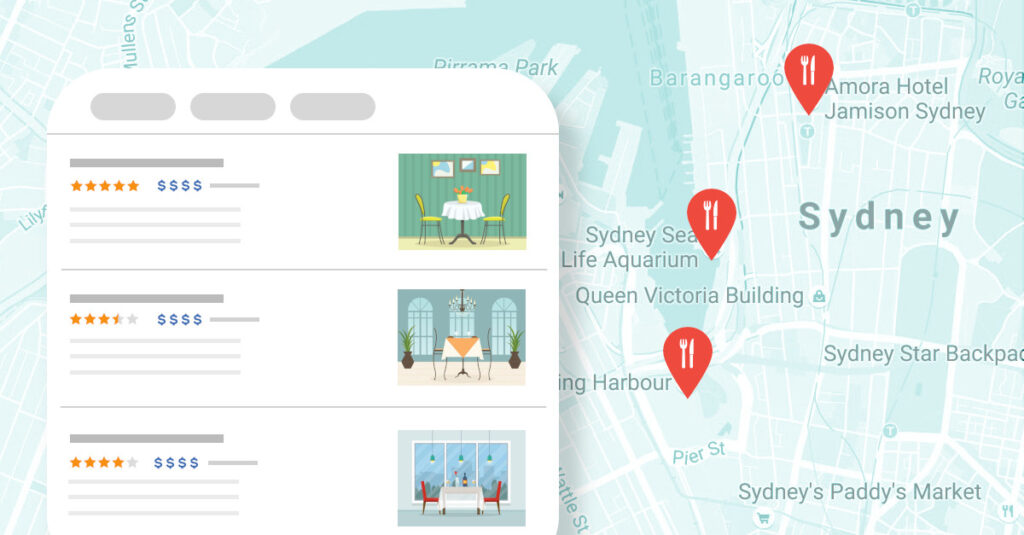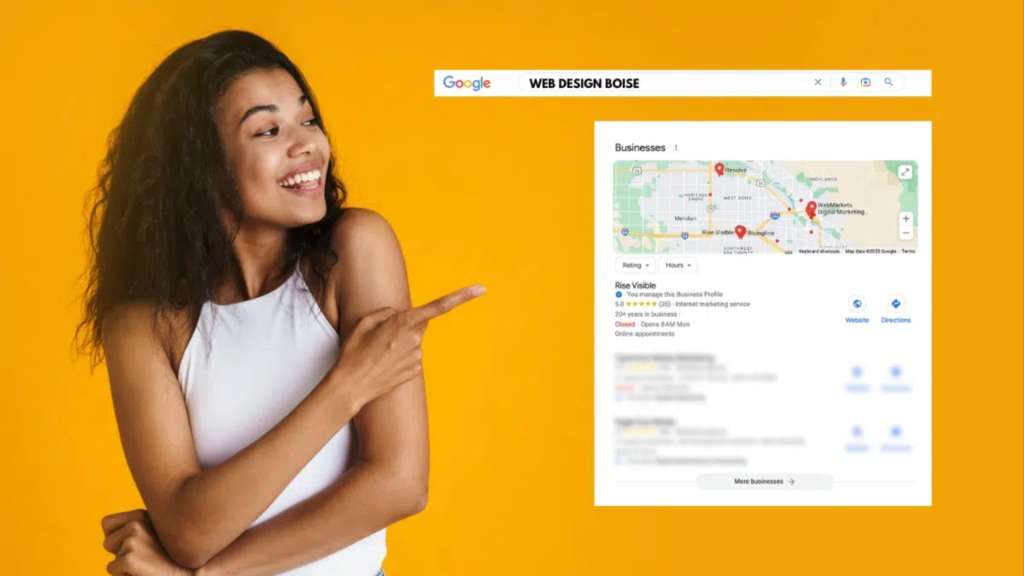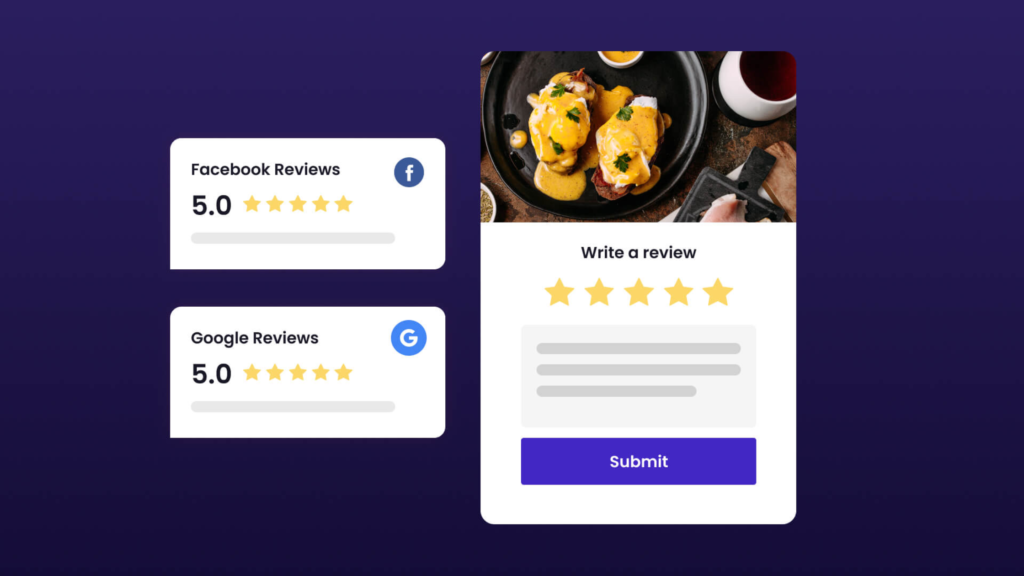Struggling to make your business stand out on Google? Boasting hundreds of five-star reviews but still not ranking where you deserve? It’s time to unlock the power of the Google “snack pack”!
The “snack pack” refers to the top three results showcased on Google Maps when someone searches for a service near them. This coveted spot guarantees the most visibility, leads, and traffic. Imagine your business right there, front and center, the first thing people see when they search!
But how do you get there?
The answer is citations. And not just any citations. We’re talking about building on trusted sources that Google rewards, all meticulously tested to ensure they’ll elevate your business to those prized top three positions.
We’ve cracked the code, and now we’re offering you the chance to reap the rewards. With our exclusive citation-building strategy, we’ll help your business climb into the Google Maps “snack pack,” putting you directly in the path of potential customers looking for your services.
Think about it: More visibility, more leads, more success. And it’s all within reach.
Ready to seize the opportunity?
The Google 3-Pack (Snack Pack) Local Update
Previously, Google displayed a list of seven local businesses known as the “7-pack” in search results. This meant that even if a business didn’t rank organically, it still had a chance to appear on the first page. However, in a recent update, Google has reduced the number of local listings to just three.
This new format offers a more concise and user-friendly experience, highlighting the most relevant results at a glance.
This change significantly impacts businesses previously ranking outside the top 3 in the local pack, effectively removing them from immediate view.
Several key adjustments are present:
- Phone numbers and addresses are no longer displayed directly.
- Google+ links are eliminated, reflecting Google’s de-association with the platform.
- Clicking a business name now leads to a dedicated Google Maps page instead of its website.
“Google has always been very focused on user experience regardless of the product or platform, so it isn’t at all surprising to see local as yet another area where Google is changing desktop to match the mobile user experience.”
- Jennifer Slegg on The Moz Blog.
If you’re physically located in the larger city, and you’re looking at surrounding smaller towns you’ll have an easier time than if it was reversed.
It also depends how many competitors you have around you and how strong they are.
The more content you have on your site (ex: Top Rated SEO Agency) the larger your radius becomes.
Last, the more external links you have at your site related to your service and the target location the better.
So if there was a website called xyz.com for example, and you got a guest post on there with a link back to your site with the anchor text being “Top Rated SEO Agency” and you pointed that to your location page it would help.
Why did Google do this?
While definitive pronouncements remain elusive, gleaning insights from broader Google initiatives offers compelling possibilities.
1. Google Wants The Local Services Market
The winds of change are swirling through the local services market, with Google at the forefront. Their recent investment of $100 million in Thumbtack and the acquisition of Homejoy’s team signal their bold ambitions in this space.
This move comes amidst rising competition from giants like Amazon, who recently launched Amazon Home Services, intensifying the battle for home service dominance.
Google, never one to cede ground to its rivals, is poised to make its mark in the local services arena, promising a dynamic and exciting landscape for both businesses and consumers.
2. Google wants more money by controlling the process
Keeping investors happy is a constant challenge for Google. Adwords alone isn’t sufficient, so they’ve set their sights on controlling all the leads.
Naturally, this means keeping users engaged with their search results and clicking their ads, as that’s the lifeblood of their revenue stream.
A recent case study by Casey Meraz at Juris Digital sheds light on user behavior within Google’s ecosystem, revealing valuable insights into where clicks are actually happening.
This information is crucial for anyone trying to understand how to navigate the ever-shifting landscape of Google’s advertising platform.
An interesting observation has emerged from the recent changes to local search results. While 46% of users still click the business name within the local pack, the destination has shifted significantly.
Previously, this click led directly to the company’s website, diverting users away from Google’s ecosystem.
However, the updated format now directs users to another Google page dedicated to the business. This subtle change has two key implications:
- Increased Page Views: By keeping users within Google’s domain, the platform benefits from additional page views, furthering its reach and influence.
- Enhanced Monetization Potential: With greater control over the user journey, Google has the opportunity to leverage targeted advertising and other monetization strategies within its own environment.
While this shift in user behavior presents clear advantages for Google, it’s worth noting that an alternative perspective exists.
Some studies, like one by Mike Ramsey at Nifty Marketing, suggest that organic listings directly below the local pack may actually receive the most clicks.
This underscores the importance of maintaining a well-optimized website and online presence beyond just claiming your local listing.
His research suggests a renewed focus on organic listings is crucial.
While click studies may vary by search results page and interpreting limited data remains challenging, these findings offer valuable insights into the potential impact of prioritizing organic optimization.
3. Google is just making leeway for more ad types.
In recent tests, Google has been experimenting with new ad formats specifically for home services. These ads showcase a unique design, departing from the traditional local 3-pack.
Strikingly similar to the local 3-pack, isn’t it?
While the future of these ads remains uncertain, one thing is clear: the traditional yellow labeling of Google Ads is fading, replaced by a subtle gray circle discreetly marking them as sponsored content.
This strategic move blurs the lines between paid and organic results, creating a seamless, almost invisible, “pay-to-play” experience. Can you almost hear the cash registers ringing?
Hypocrisy
The irony of this situation lies in Google’s own stance on scraping. While they strongly oppose the practice of taking information from other pages and publishing it as your own, they themselves engage in similar activities.
The company actively blocks IP addresses known for scraping Google, ultimately hindering the functionality of many rank trackers.
Even their official content guidelines explicitly discourage scraping, creating a clear contradiction between their internal practices and public pronouncements.
This inconsistency has raised concerns about Google’s own ethical standards and their commitment to fair competition.
While Google may disapprove of others scraping data, it seems they hold their own practices to a different standard.
As the tweet hilariously demonstrates, Google itself might be the world’s biggest scraper.
(*this search result has been since updated)
But why would Google be a scraper?
Google is introducing new home service ad types that could significantly impact how businesses capture leads.
These ads allow Google to handle the entire lead transaction, potentially giving them control over both the leads and their sale.
Img src=”https://www.greatguestposts.com/wp-content/uploads/2015/08/Screenshot-2015-08-11-11.24.04.png” alt=”Google lead capture” width=”2544″ height=”1374″ class=”size-full wp-image-3008″ />
img src=”https://www.greatguestposts.com/wp-content/uploads/2015/08/Screenshot-2015-08-11-11.19.51.png” alt=”Google collecting $$ for leads ” width=”2556″ height=”1376″ class=”size-full wp-image-3010″ />
There’s a growing concern that Google might be prioritizing keeping users on their search results page rather than directing them to the actual business websites. This is because Google can benefit from displaying more of the business’ content within the search results itself.
This allows them to act as the middleman, capturing leads through readily available Google contact forms and potentially selling them to advertisers. This gives Google significant control over the financial flow and transactions.
Google’s awareness of this strategy’s effectiveness is evident in their efforts to incorporate more information directly into search results, thereby extending user engagement with their platform.
Furthermore, the recent introduction of a new ad format has resulted in a heavy concentration of ads at the top of search results, a practice which Google discourages for others but seemingly condones for themselves. In 2012, Google even implemented an update that penalized pages employing similar tactics.
Google effectively uses 70% of the page for advertising… haha. It works.
Local SEO 3-Pack: Effect
In today’s digital age, being visible online is crucial for any business. However, recent changes in Google’s search algorithm could be pushing your company down the rankings, making it harder for potential customers to find you.
While losing the phone number on the 3-pack might seem like a disadvantage, some businesses have experienced higher quality leads despite having less traffic. This could be due to customers having to actively seek out the phone number, suggesting a greater level of interest and intent.
Google’s Local 3-Pack SEO Strategy
Fill Out Your Google My Business Page Correctly!
Google My Business (GMB) acts as your digital storefront, pulling key information about your business – including address, phone number, images, and more – directly into search results. This makes it crucial to claim and optimize your GMB profile for maximum visibility.
Craft a unique, well-formatted description with links.
- Select accurate categories for your business.
- Upload high-res profile and cover photos.
- Add as many photos as you can.
Add a local phone number to your listing.
- Add your business address that’s consistent with the address on your website and local directories.
If your staff do not mind, add images of them as well. Personalisation goes a long way when choosing a local company to do business with.
Earn positive Google Reviews
With Google hiding phone numbers and exact addresses in search results, star ratings and reviews have become even more important for local businesses. Climbing into the top 3 spots now depends heavily on accumulating a high volume of good reviews, not just on Google but also on local directories like Yelp (which powers Apple Maps).
Pay Attention To Your ‘open’ And ‘closing’ Hours
Google has updated local business listings to include working hours directly within the snippet. This means the information displayed will change depending on the time a user starts their search:
- Closes at ___
- Closes soon
- Opens at ___
- Closed now
Accurately representing your business hours on Google My Business is crucial for maintaining a positive customer experience and protecting your brand reputation. Leaving your opening hours listed as “open all hours” when you’re not truly available can lead to frustrated customers and negative reviews.
Specialize Your Brand
In today’s competitive landscape, standing out in local searches is crucial. To ensure your business appears above the competition, focus on laser-targeted keywords. Instead of generic terms like “carpet cleaning,” try “carpet cleaning near Leesburg, VA.” This specificity increases your chances of appearing in the coveted local SEO 3-pack.
Improve Your On-page SEO
Local SEO isn’t just about claiming your spot on Google Maps. It’s also about ensuring your website content is optimized for local search. One key way to do this is by strategically incorporating your city/region and relevant keywords into your landing page elements.
- Title tag
- H1 tag
- H2 tag
- Page URL
- Page Content
- Image ALT attributes
Adding a Google map with your business marker to your landing page is a simple yet impactful way to improve your local SEO.
Link Building for Local SEO
Link building is crucial for all SEO campaigns, but it’s even more important for local SEO. Unlike traditional SEO, which focuses on links from any relevant website, local SEO emphasizes links from local websites related to your business.
For example, if you’re a local plumber, getting listed on plumbing web directories that show your address is a must. These links boost your local search ranking, making it easier for potential customers to find you.
The same goes for Yelp and Yellow Page-like directories. Building a strong presence on these platforms, in addition to driving traffic to your website, increases your online visibility and establishes your local authority.
Conclusion
In the competitive world of local business, visibility is key. And the coveted Google 3-pack, the top three results for local searches, offers the prime real estate for attracting customers.
But how do you get there? This guide will equip you with the essential strategies to boost your local SEO and climb to the top of the pack.



